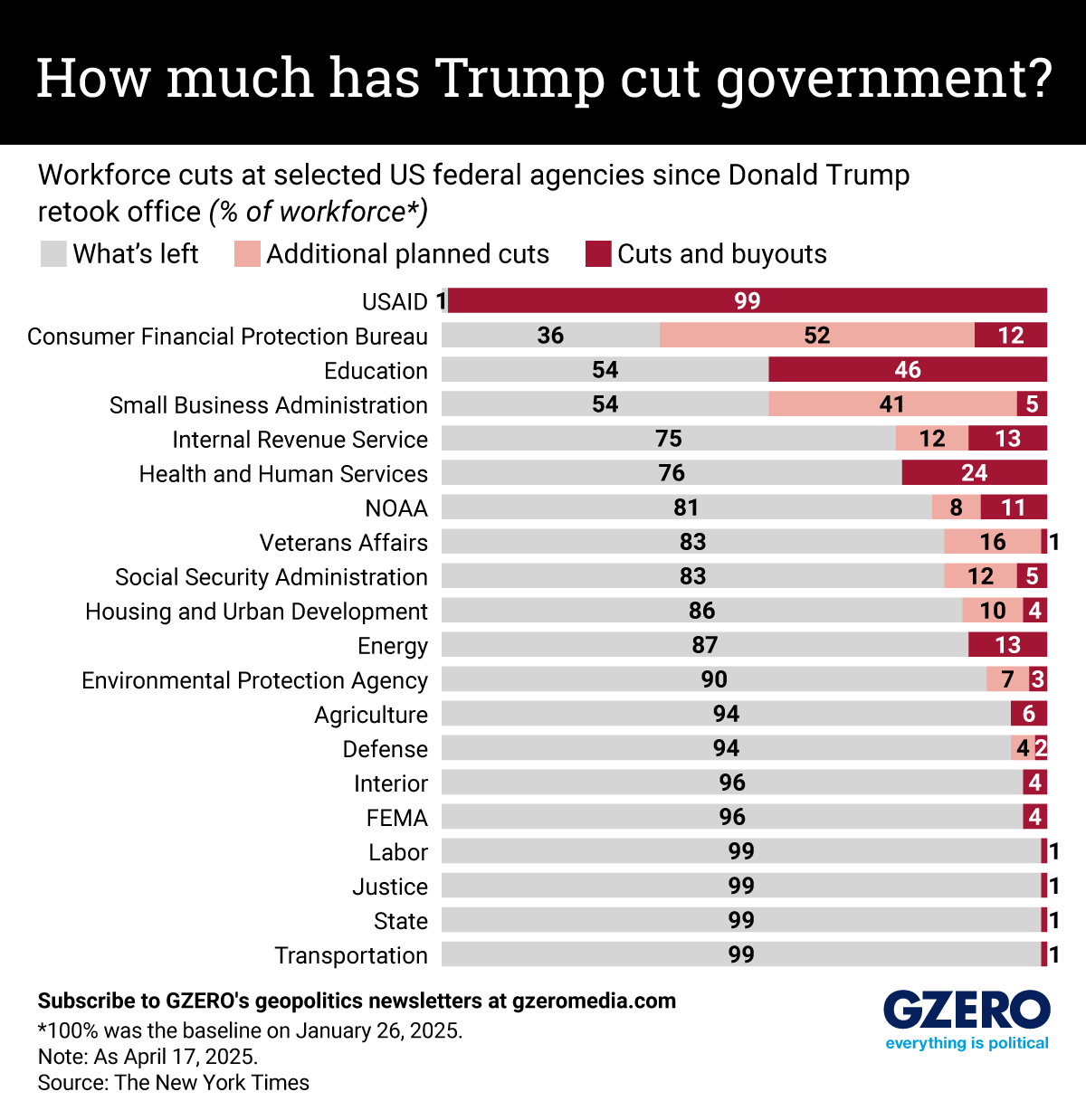April 20, 2025
Since returning to office in January, US President Donald Trump has brought sweeping reductions to the federal workforce, firing or otherwise facilitating the departures of more than 200,000 government employees. It’s a stark contrast from the start of his first administration, when firings were more limited to high-ranking officials.
This is all part of Trump’s attempt to improve government efficiency and slash costs, but there’s just one problem: Congress controls the purse, and only 4.3% of the government budget goes to federal employees anyway. What’s more, some of these workforce cuts have faced legal challenges. Just on Friday, a judge halted the removal of 1,500 jobs at the Consumer Financial Protection Bureau.
At other times, the president’s plans have won out in court. Earlier this month, the Supreme Court green-lighted the removal of 16,000 government workers who were on probation across a suite of federal agencies. Some staff have also been willing to go: Over 20,000 Internal Revenue Service officials — roughly one-fifth of the workforce — have accepted government buyouts.
Here’s a look at which departments and agencies have taken the brunt of Trump’s blows so far.
More For You
Immigration and Customs Enforcement (ICE) agents check the identity documents of a group of agricultural workers at a grocery store parking lot during an immigration raid in Mecca, California, U.S. December 19, 2025.
REUTERS/Daniel Cole
A year into US President Donald Trump’s second term, America’s immigration policy has undergone one of its most sweeping resets in decades.
Most Popular
Think you know what's going on around the world? Here's your chance to prove it.
Big global stories. Real conversations with world leaders. Our award-winning global affairs show, GZERO World with Ian Bremmer, goes beyond the headlines on the stories that matter most. Here’s a look back at the 10 most quotable moments from this year’s episodes.
Holiday spending is rising, but many households are paying more for fewer items as prices climb. Higher-income consumers continue to outspend lower-income groups, and signs of financial strain persisted heading into peak shopping months. See the full Consumer Checkpoint from Bank of America Institute.
© 2025 GZERO Media. All Rights Reserved | A Eurasia Group media company.
